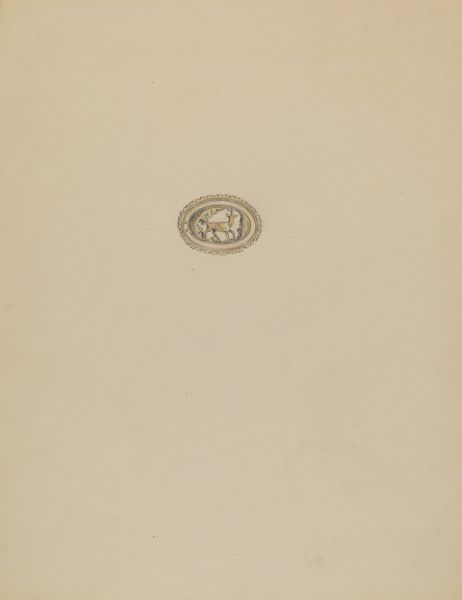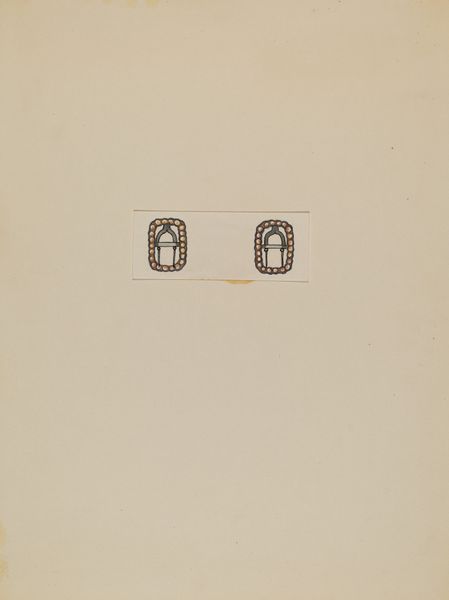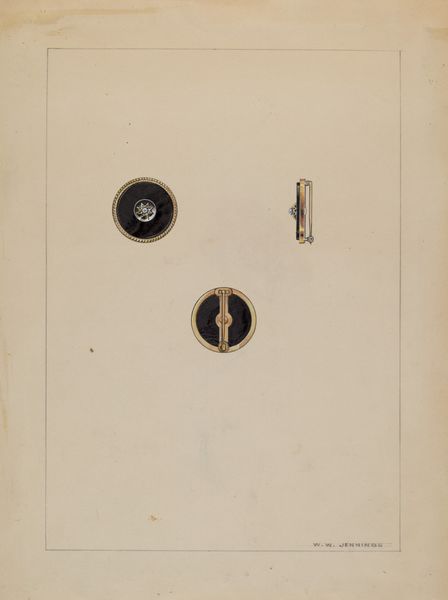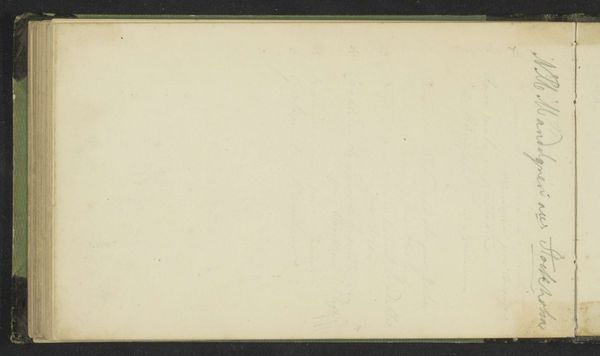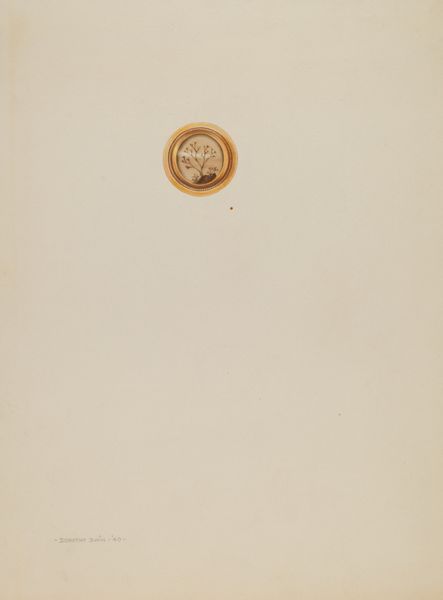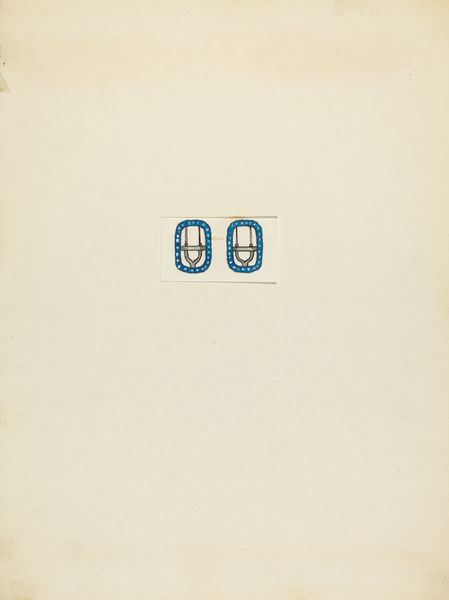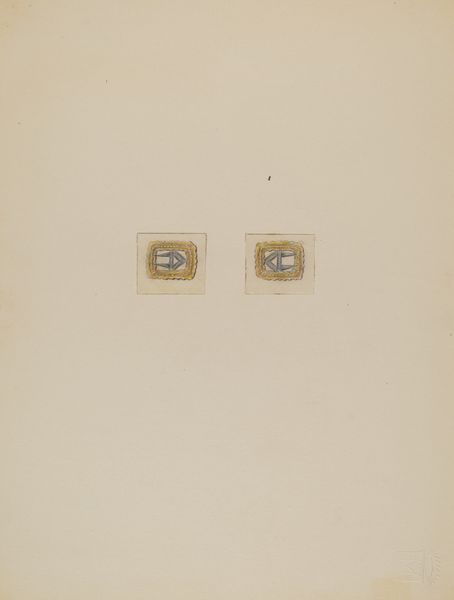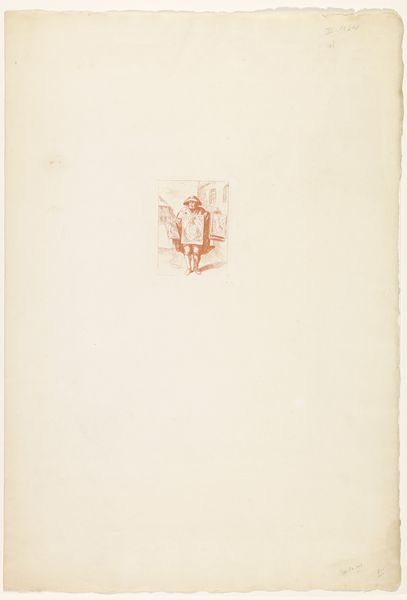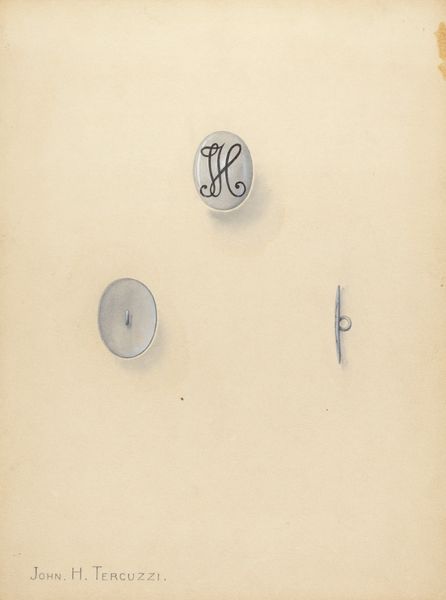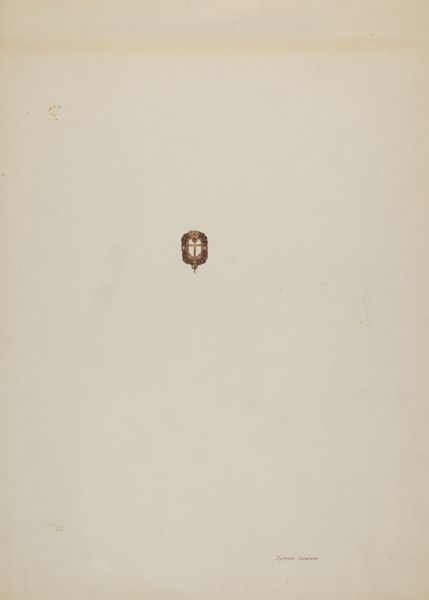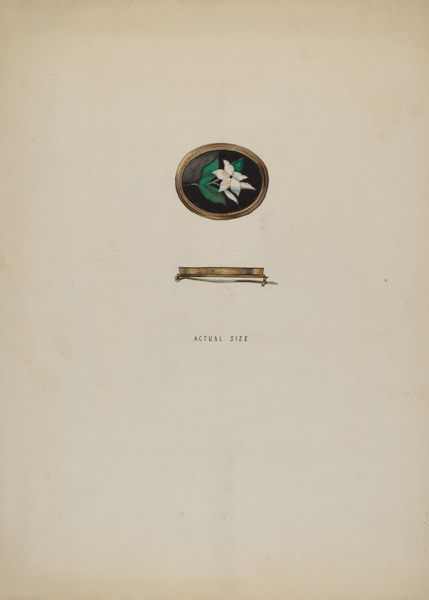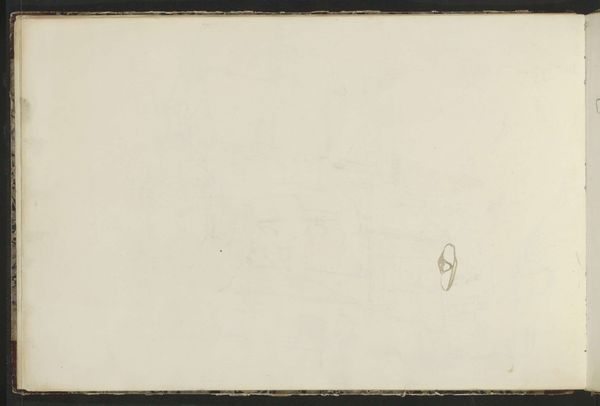
drawing, paper, watercolor
#
drawing
#
water colours
#
paper
#
watercolor
#
geometric
#
watercolour illustration
#
watercolor
Dimensions: overall: 4.6 x 3 cm (1 13/16 x 1 3/16 in.)
Copyright: National Gallery of Art: CC0 1.0
Curator: Well, look at this. We have here "Buckle," a watercolor and drawing on paper made around 1936 by Charles Criswell. Editor: My immediate reaction is that this feels quite small and isolated. It almost looks like a postage stamp sitting on a much larger envelope. There is also something clean and architectural about this geometric composition, but also slightly unsettling. Curator: It's interesting that you find it unsettling. Given that it’s a depiction of a buckle, a utilitarian object designed for security and fastening, the artist has essentially taken an everyday functional tool and elevated it, stripping it from any social and utilitarian context. Editor: Absolutely, and within that gesture of isolating a single functional form we see something further, something almost perverse. A buckle secures, yes, but in the mid-1930s what did security mean for the American people, recently stuck in the midst of the great depression and soon to embark into war? What exactly does this small mechanism bind and constrain? Curator: Those are very potent ideas, considering the buckle also evokes a sense of industrialization, but I want to highlight Criswell’s subtle but masterful execution of the watercolor and drawing, bringing attention to detail on such a diminutive scale. Editor: Agreed, and what does this close study accomplish other than ennobling an object? Does the attention redeem it in some way? What might appear, in fact, very controlled and technical also allows some chance element from the watercolor medium to emerge, allowing its tones to fade and create tonal nuances and textures that would likely go unnoticed. Curator: Perhaps that subtle interplay speaks to the inherent beauty that can be found in even the most mundane objects when observed through the lens of art. Editor: Perhaps it's also about the illusion of control. By focusing on a device literally made to control, we're invited to consider what it truly means to be secure in an era defined by immense social, political and personal insecurity. Food for thought, indeed. Curator: Definitely! A wonderful object of its time, revealing just how connected art remains to lived historical experience.
Comments
No comments
Be the first to comment and join the conversation on the ultimate creative platform.
